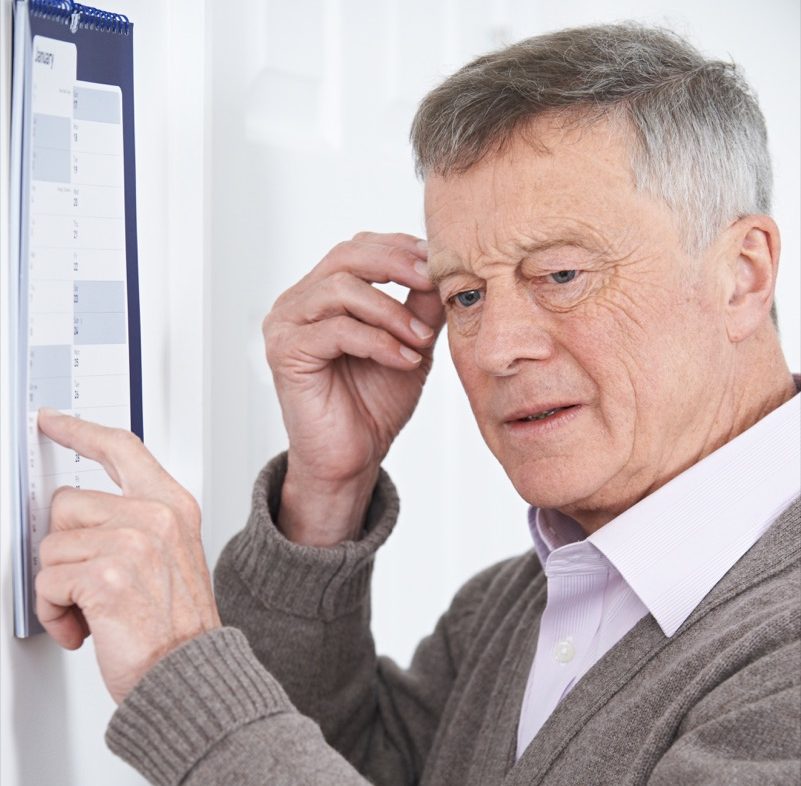This type of inflammation is rare, she says, but should be considered a sign of a possible COVID infection. “The vast majority of people will still have fever and some sort of respiratory symptom, and frequently achiness, like you have in any kind of viral syndrome. But over time, we are seeing some of these additional symptoms,” Rizza explains. “The other one that has been far less often but could be predicted from again where we see this receptor being expressed, is inflammation of the testis, or orchitis. We have seen some symptoms of that over time, as well.” Other studies corroborate Rizza’s assessment, explaining that COVID can cause systemic disruptions to the sexual and reproductive system in male patients. “As with previous coronaviruses, viral binding to the ACE2 receptor in the testis may lead to tissue inflammation and the development of orchi-epididymitis with testicular pain,” researchers write in the journal Reproductive BioMedicine Online. This can go on to cause “testicular damage and orchitis,” they explain. COVID has also been found to cause erectile dysfunction (ED) in men. A recent literature review published in the Journal of Endocrinological Investigation over the summer was one of the earliest to confirm onset ED as a symptom of COVID-19. That research team concluded that male COVID patients were more likely to experience hypogonadism—a condition in which the sex organs release little to no sex hormone—than those who have not had COVID. “Whether this state of hypogonadism is permanent or temporary is a question so far left unanswered,” the team explained. However rare, this strange symptom serves as a reminder that COVID can impact just about every system in the body—all the more reason to take serious precautions against transmission. Read on for four more rare COVID symptoms the Mayo Clinic says to look out for, and to learn the emergency symptoms of COVID, check out If You Have One of These Symptoms, the CDC Says Go to the Hospital Now. Read the original article on Best Life. 1 Skin changes According to William F. Marshall, III, MD, an infectious disease specialist and internist at the Mayo Clinic, skin changes are a rare symptom of COVID that should be on your radar. “Younger people with less severe COVID-19 might develop painful, itchy lesions on their hands and feet that resemble chilblains, an inflammatory skin condition,” he explains on the Mayo Clinic website. “Sometimes called COVID toes, this symptom typically lasts about 12 days. However, new research suggests that these lesions might simply be chilblains caused by sedentary behavior and failure to wear warm footwear during lockdowns, rather than by COVID-19,” he adds. 2 Confusion Marshall also suggests that new, onset confusion or brain fog is strange and rare COVID symptom. “COVID-19 also has been reported to cause confusion in older people, especially those with severe infections,” he explains. This symptom is also on The CDC’s list of emergency symptoms, which require immediate medical attention. In some cases, it indicates a lack of oxygen to the brain, which could be the result of blood clots or damaged blood vessels from a COVID infection. And to learn all of The CDC’s emergency symptoms, check out If You Have One of These COVID Symptoms, the CDC Says to Call 911. 3 Eye problems Eye problems are rare in COVID cases, but they are known to be associated with the virus, says Marshall. “COVID-19 might cause eye problems such as enlarged, red blood vessels, swollen eyelids, excessive watering and increased discharge,” he explains. “The infection also might cause light sensitivity and irritation. These symptoms are more common in people with severe infections,” he adds.ae0fcc31ae342fd3a1346ebb1f342fcb 4 Nausea or vomiting As we’ve learned more about COVID-19, it has become apparent that many people experience gastrointestinal symptoms, sometimes in the absence of more traditional respiratory symptoms. According to Marshall, these can include nausea and vomiting in some patients, along with diarrhea and loss of appetite. “These symptoms might only last one day,” he explains, adding that some COVID patients later develop fever and respiratory symptoms. And for more on decoding your COVID symptoms, check out If You Have This Symptom, You’re More Likely to Have a Mild COVID Case.
